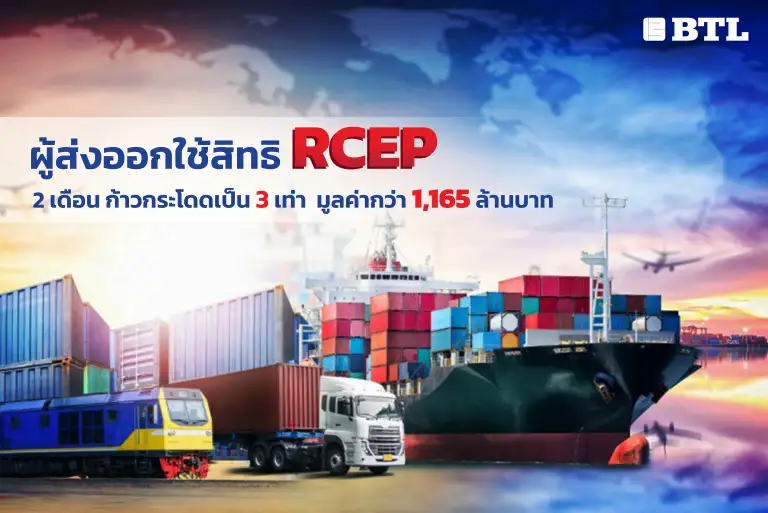Thai Exporters Utilizing RCEP Benefits Surge 3-Fold in Two Months, Reaching 1.165 Billion Baht
March, 23 2022

Mr. Phithak Udomwichaiwat, Director-General of the Department of Foreign Trade, revealed that from January 1, 2022, to February 28, 2022, Thai exporters applied for Certificates of Origin under the RCEP agreement, amounting to 1.165 billion baht.
Top Export Destinations Under RCEP:
- Japan → 540.36 million baht (Key products: processed fish such as herring, tuna, skipjack, processed vegetables, and textiles)
- China → 453.95 million baht (Key products: fresh agricultural goods such as cassava, longan, durian, and coconut)
- South Korea → 171.21 million baht (Key products: airbags with inflation systems, motorcycles, volatile oils, shampoo, and cotton shirts for men or boys)
Explosive Growth in February 2022
- January 2022: RCEP utilization reached 277.84 million baht, primarily in Japan and China.
- February 2022: Utilization surged to 887.67 million baht, a 219.49% increase, or a three-fold jump from the previous month.
- This sharp growth coincided with South Korea’s implementation of RCEP on February 1, 2022, leading to an increase in Thai exports to South Korea.
Key Factors Driving RCEP Utilization
-
Simplified Rules of Origin (ROO):
- The RCEP agreement eases the qualification criteria for obtaining Thai-origin certification, making it easier for businesses to comply.
-
Faster Customs Clearance Under RCEP:
- Perishable goods must be cleared within 6 hours.
- General goods must be cleared within 48 hours.
- This predictability allows businesses to plan exports and imports more efficiently.
Mr. Phithak Udomwichaiwat noted that these advantages have led to a surge in RCEP utilization, making it a highly beneficial trade agreement for Thai exporters.